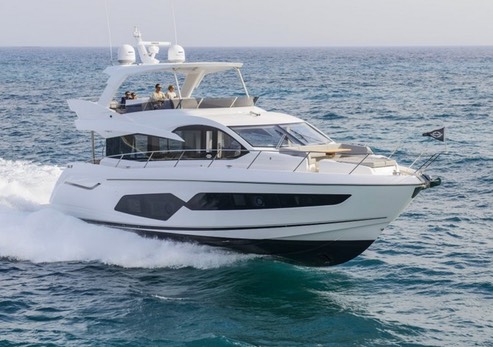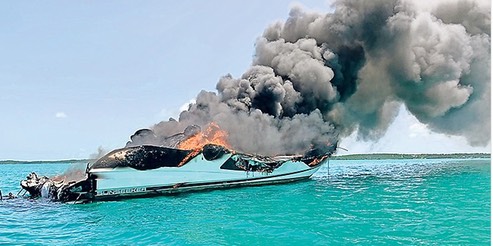Blog
Navigation & Seamanship
Homecoming!
Solo Sailor Returns Home After 267 Days at Sea

After spending 267 days alone at sea aboard his 43-foot sailboat, Bert ter Hart has finally returned home from his non-stop circumnavigation of the globe. The 62-year-old used only celestial navigation on his journey, which means no GPS and only a sextant, sailor’s almanac, log tables and pen and paper to assist him during his travels. The Gabriola, British Columbia, man is the first North American to accomplish such a feat, and one of only five people in the world.
During his journey, ter Hart navigated 50- to 60-knot winds that threw waves as tall as his mast, and he only anchored once throughout the whole trip when he encountered a hurricane in the Falkland Islands. He had to keep three points of contact with the boat at all times to avoid being thrown around, so he ate every meal standing up, and he strapped himself to his bed with a seat belt as tightly as he could, never sleeping for longer than two hours at once as the boat was constantly in motion.
At the beginning of his journey, ter Hart was consuming up to 3,000 calories today, but by May he was eating only 800 per day to ration his food supply. Border closures due to the pandemic made resupply complicated, but his sister, Leah ter Hart, helped arrange a food drop off through a fishing charter, which involved getting approval from the Cook Islands government.
When ter Hart finally arrived in Victoria after nine harrowing months, his final challenge was convincing the authorities to waive the mandatory two-week quarantine period, as he had not stepped foot off his boat for months. His family called him “the safest man on the planet” as he had not made contact with another person since the pandemic began, and Victorian government obliged, exempting him from the quarantine. Ter Hart was greeted by his four children, his grandson, and his 92-year-old father, among other family members and friends. You can read more here or visit ter Hart’s blog.
More photos of the homecoming.
Bravo Zulu; welcome home!
/fl
Marine Safety
Flare Disposal Program Coming to Florida
Boaters are required to carry U.S. Coast Guard-approved daytime- and nighttime-rated visual distress signals—pyrotechnic flares are usually rated for both—while operating on U.S. coastal waters or the Great Lakes. Unfortunately, these flares expire after 42 months and cannot be recycled. They contain toxic chemicals and obviously are flammable, which makes them difficult to dispose of safely.
The federal government doesn’t have a flare disposal system in place and most states don’t have plans for disposing of them, either. This means a lot of old flares remain on boats as “spares,” or they are thrown in the trash, which is dangerous and bad for the environment.
To address this problem, next year The Sea Tow Foundation will launch a flare disposal pilot program in Florida. Using a grant from the U.S. Coast Guard, the Sea Tow Foundation will send a mobile incineration unit to events to collect expired flares.
“While flare disposal is not part of a boater’s legal responsibility, it does affect the environment when not disposed of properly,” stated Gail R. Kulp, Sea Tow Foundation’s Executive Director. She added, “Not disposing of flares properly can also impact the safety of boaters if expired flares are stored on board boats.”
Plans for the flare disposal program are still in the early stages, but www.flaredisposal.com has been created and will have more information as it becomes available.
For more information about flares and why they have expiration dates, read 5 Things You Should Know About Flares by Mario Vittone.
/Soundings/Pim Van Hemmen
Navigation & Seamanship
ETA!
For those who have been, and those who haven’t been, following Bert ter Hart’s circumnavigation around The 5 Capes, using only celestial navigation, Bert has finally calculated an estimated time of arrival home— at Vancouver: SAT, JUL 18 AT 12:00 PM PDT
That’s good news, although he has been becalmed for the past few days and is waiting for that final push that will carry him across the finish line.
/fl
Public Affairs
Today’s Thin Blue Line
I was just thinking about the current state of affairs in this nation, and this image popped into my mind:

/fl
Safety
Vanish


The yacht, named Vanish, was owned by Alejandro Capo of Miami. He, his family and a captain arrived at Valentines shortly after the Bahamas reopened to recreational boating on June 18.
Whether powered by sail or motor, there are numerous sources of potential catastrophic fire aboard every cruising boat. Remember the “fire triangle”, and keep the components isolated from each other. If you are carrying gasoline or propane, or any combustible material that produces fumes heavier than air, you should be concerned all of the time.
Be safe!
/fl
